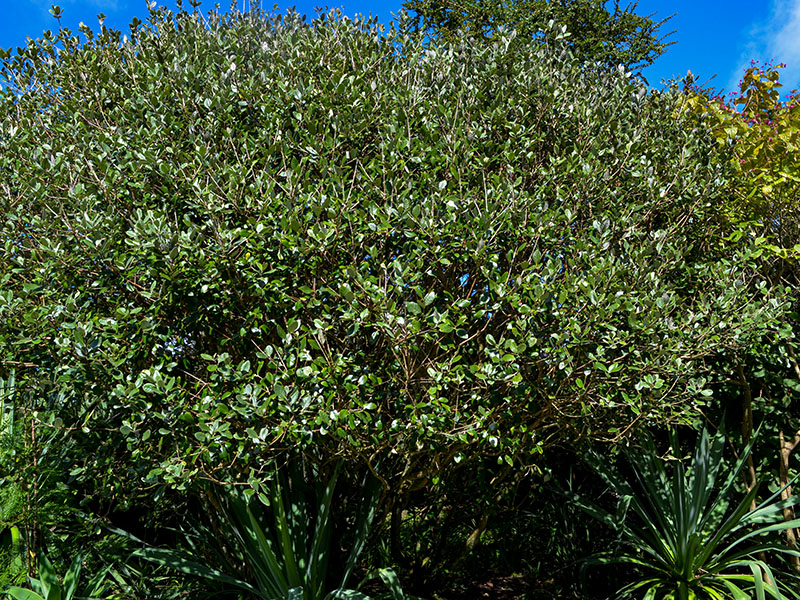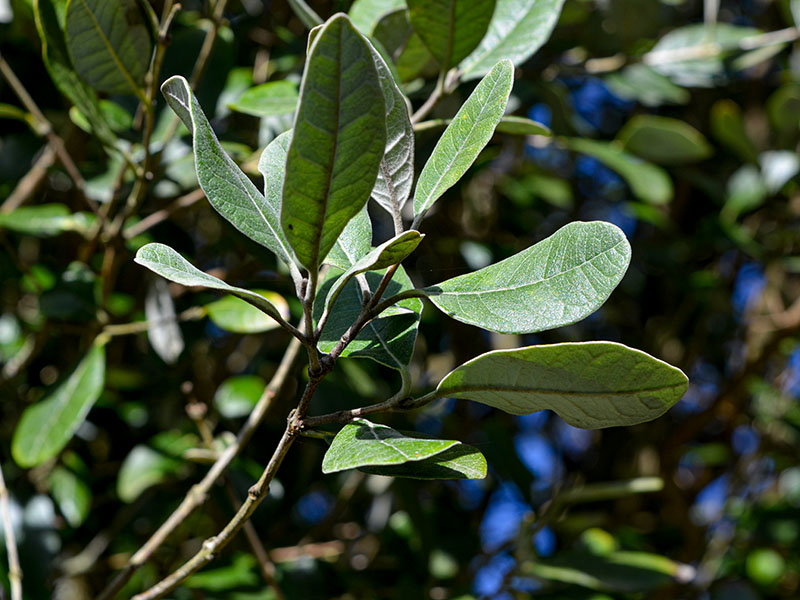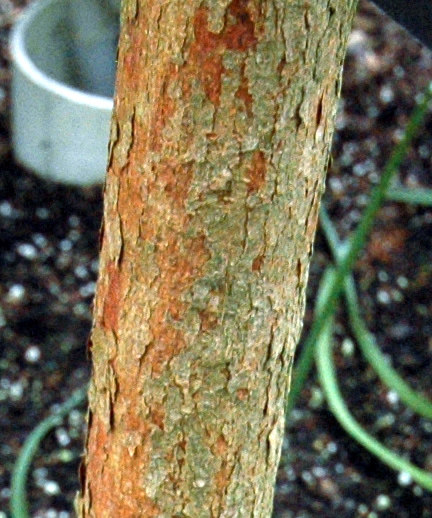
Tropicals, Woody > Acca > Acca sellowiana > Acca sellowiana
Acca sellowiana
Feijoa, Pineapple Guava, Guavasteen
| Family |
| Myrtaceae |
| Genus |
| Acca |
| Species |
| sellowiana |
| Category |
| Tropicals, Woody |
| Type |
| Tree (evergreen), Shrub (evergreen) |
| Synonyms |
| Feijoa sellowiana |
| Pronunciation |
| USDA Hardiness Zone |
| 11a |
| Canadian Hardiness Zone |
| Requires cool season protection under glass |
| RHS Hardiness Zone |
| H1c |
| Temperature (°C) |
| 4 - 7 |
| Temperature (°F) |
| 40 - 45 |
| Height |
| 1-7 m |
| Spread |
| 120-180 cm |
Photographs
Description and Growing Information
Flowering Period
| Cultivation |
| It is a warm-temperate to subtropical plant that also will grow in the tropics, but requires at least 50 hours of winter chilling to fruit but is frost-tolerant. When grown from seed, feijoas are noted for extremely slow growth during their first year or two, and young plants, though cold tolerant, can be very sensitive to high wind. Plant in a sheltered location such as a south facing wall in well drained soil planting in pairs to ensure cross pollination. |
| Growth |
| Medium |
| Pests |
| The shrub is remarkably pest-resistant. Occasionally it may be attacked by hard wax scale (Ceroplastes sinensis) and associated sooty mold in New Zealand and Florida, also greedy scale in New Zealand, by black scale (Saissetia oleae) in California and southern Europe. In New Zealand, the larvae of a leaf-rolling caterpillar (Tortrix spp.) and of a bagworm moth may eat holes in the leaves but they are effectively controlled with suitable sprays. Fruit flies attack the ripe fruit. A leaf-spotting fungus (Sphaceloma sp.) occasionally requires control measures. In Florida, leaf spot is caused by the fungi Cercospora sp., Cylindrocladium scoparium, and Phyllosticta sp.; algal leaf spot by Cephaleuros virescens. Thread blight (Corticium stevensii Burt. and Rhizoctonia ramicola), and mushroom root rot (Clytocybe tabescens). |
| Habitat |
| Native to the highlands of southern Brazil, Colombia, Uruguay, and northern Argentina. |
| Bark/Stem Description |
| Pale grey to brown bark. |
| Leaf Description |
| Evergreen, opposite, short-petioled, bluntly elliptical leaves are thick, leathery, 28-62 mm long, 16-28 mm wide; smooth and glossy on the upper surface, finely veiny and silvery-hairy beneath. |
| Flower Description |
| Conspicuous, bisexual flowers, 4 cm wide, borne singly or in clusters, have 4 fleshy, oval, concave petals, white to pink outside, purplish-red inside; 1.6-2 cm long, and a cluster of numerous, erect, purple stamens with round, golden-yellow anthers. The thick, fleshy petals are eatable and sweet tasting. |
| Fruit Description |
| The fruit is oblong or ovoid or slightly pear-shaped, 4-6 cm long and 2.8-5 cm wide, with the persistent calyx segments adhering to the apex. The thin skin is coated with a "bloom" of fine whitish hairs until maturity, when it remains dull-green or yellow-green, sometimes with a red or orange blush. The fruit emits a strong long-lasting perfume, even before it is fully ripe. The thick, white, granular, watery flesh and the translucent central pulp enclosing the seeds are sweet or subacid, suggesting a combination of pineapple and guava or pineapple and strawberry in flavor. There are usually 20 - 40, occasionally as many as 100, very small, oblong seeds hardly noticeable when the fruit is eaten. |
| Notable Specimens |
| Royal Botanical Gardens, Burlington, Ontario, Canada. Trebah Garden Trust, Mawnan Smith, Falmouth, Cornwall, United Kingdom. |
| Propagation |
| Propagate from softwood or semi-hardwood cuttings or by seed. |


